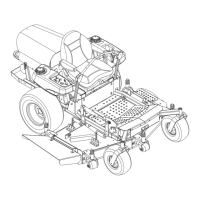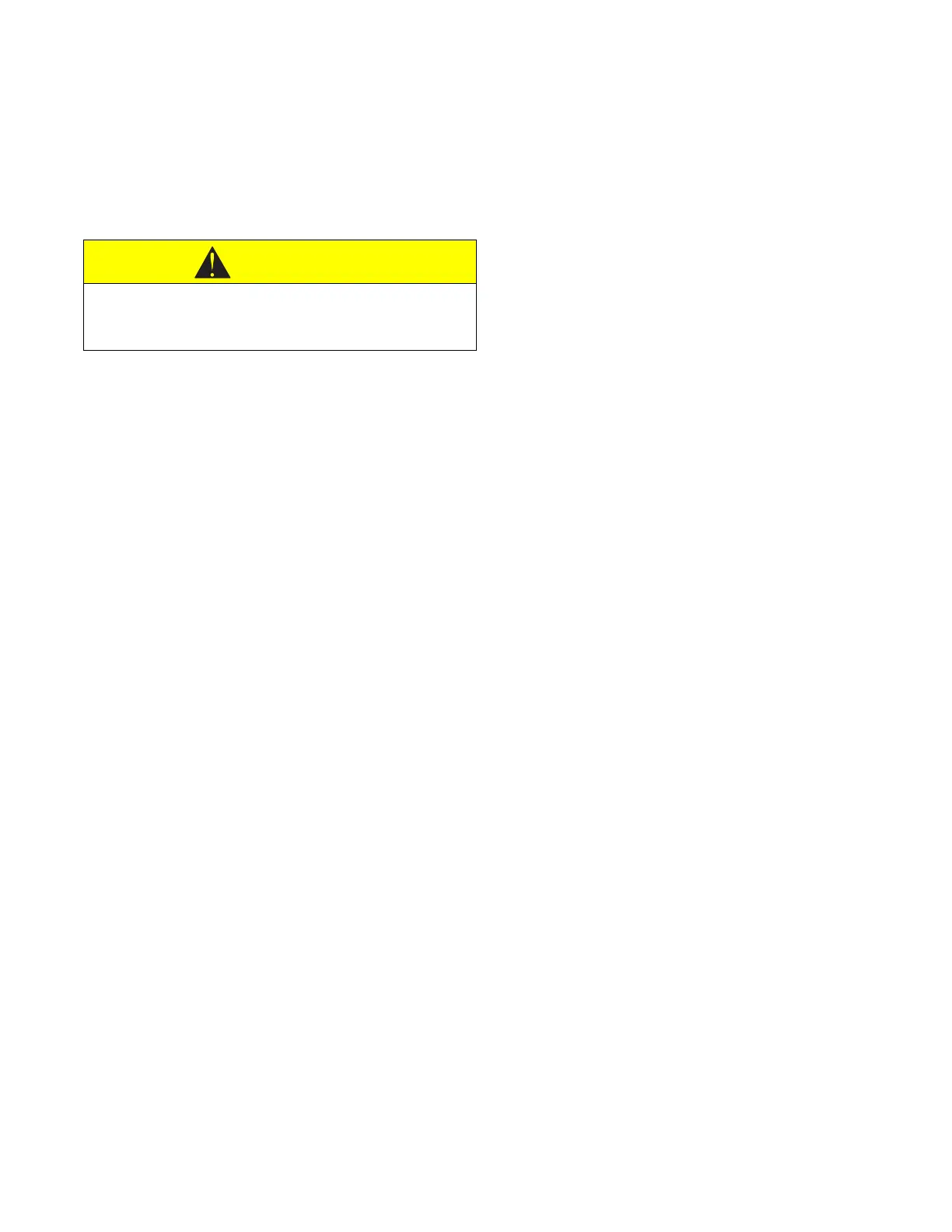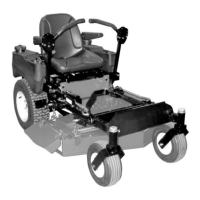1/00 17
MOWING TIPS
The following tips will help you to mow safely, achieve
maximum performance from your mower and enhance
the appearance of your turf.
• When Bagging, stop the PTO before attempting to
remove and empty grass bag. Empty bag before it
becomes overloaded, clogs mower and/or affects
performance.
• Restarting the PTO will be easier if mower is allowed to
completely discharge clippings before stopping engine.
• Be sure your mower blades are sharp. Dull blades will
tear grass. This usually results in a white cast over a
freshly cut turf. Later, tips of grass blades will turn
brown.
• A new lawn has much softer blades of grass and has a
higher moisture content. It is important for this type of
turf to be cut with sharp blades.
• Cutting height will vary with different types of grass,
climate and individual preference. Generally, grass
should be cut about 1-1/2" long in spring, and not less
than 2 -1/2" long in hot summer weather.
• If grass is high, or if it contains a high degree of
moisture, cut it first with mower set high and then cut it
with mower set lower. This gives better distribution or
collection of clippings and provides a clean second cut.
• Height of cut should not be set too low on thick, lush
turf. Such grass, if cut too short, may die. This also
applies to springy, heavy growth turf. If mower is set too
low, the pan will drag on grass and restrict air flow thus
reducing discharge or collection of clippings.
• Grass should be cut when it is dry; not when it is wet
from dew, rain or from watering. When wet, grass tends
to pack inside mower pan or chute and will not
discharge, mulch or bag properly, especially if height of
cut is set too low.
• To ensure most complete and even cut, overlap each
swath.
• Following the same pattern each time you mow your
lawn can develop ridges at right angles to direction of
mowing. By changing direction of mowing (when
possible) you can prevent this.
• When using side discharge, turn clockwise (right turn)
when beginning to mow large open areas. This
discharges clippings away from borderline objects
(sidewalks, driveways, fences, etc.). After making a
clockwise pass, mow in a counterclockwise (left turn)
direction. This discharges clippings evenly over cut
grass. Continuous clockwise mowing will cause a build
up of clippings, preventing a uniform cut. Also, plan
cutting so that you always trim with the left side of
mower when using side discharge.
• A good fertilization program and frequent watering will
keep your turf weed-free and green all year long. Due
to variations in climate, soil and grass varieties, contact
your local garden supply dealer, park or golf course
superintendent, or county agent to obtain specific
information pertaining to your area.
NOTE: Be sure to empty grass bag and clean mower pan
after each use. A dirty unit may not bag and/or cut grass
properly.
• Do not allow grass clumps or a coating of grass and
debris to collect inside of grass bag or mower pan.
Avoid operating over bare ground intermittent with
grass cuttings as this causes dirt and grass to collect
and cake under pan surface as well as in grass bag.
• Grass bag should be washed with hose and allowed to
dry. Washing grass bag prevents debris buildup, that
will clog mesh of bag, which will prevent proper air
circulation and bagging of grass.
MULCHING TIPS
For best performance, it is recommended that the height
of cut for your mower be set at, or as near as possible to,
3 inches and that not more than 1 inch of grass is
removed per cutting.
Grass should be cut when it is dry, not when it is wet from
dew, rain, or from watering. When wet, the grass will tend
to ball and pack inside the mower pan and will not
disperse evenly. If the grass does not disperse evenly, it
probably is because too much grass is being removed
per cutting, the grass is too wet, or the travel speed is too
fast.
CAUTION
If clog or obstruction prevents grass flow, stop PTO,
shut off engine, remove key and disconnect spark plug
wire before attempting to clear away any clogs.

